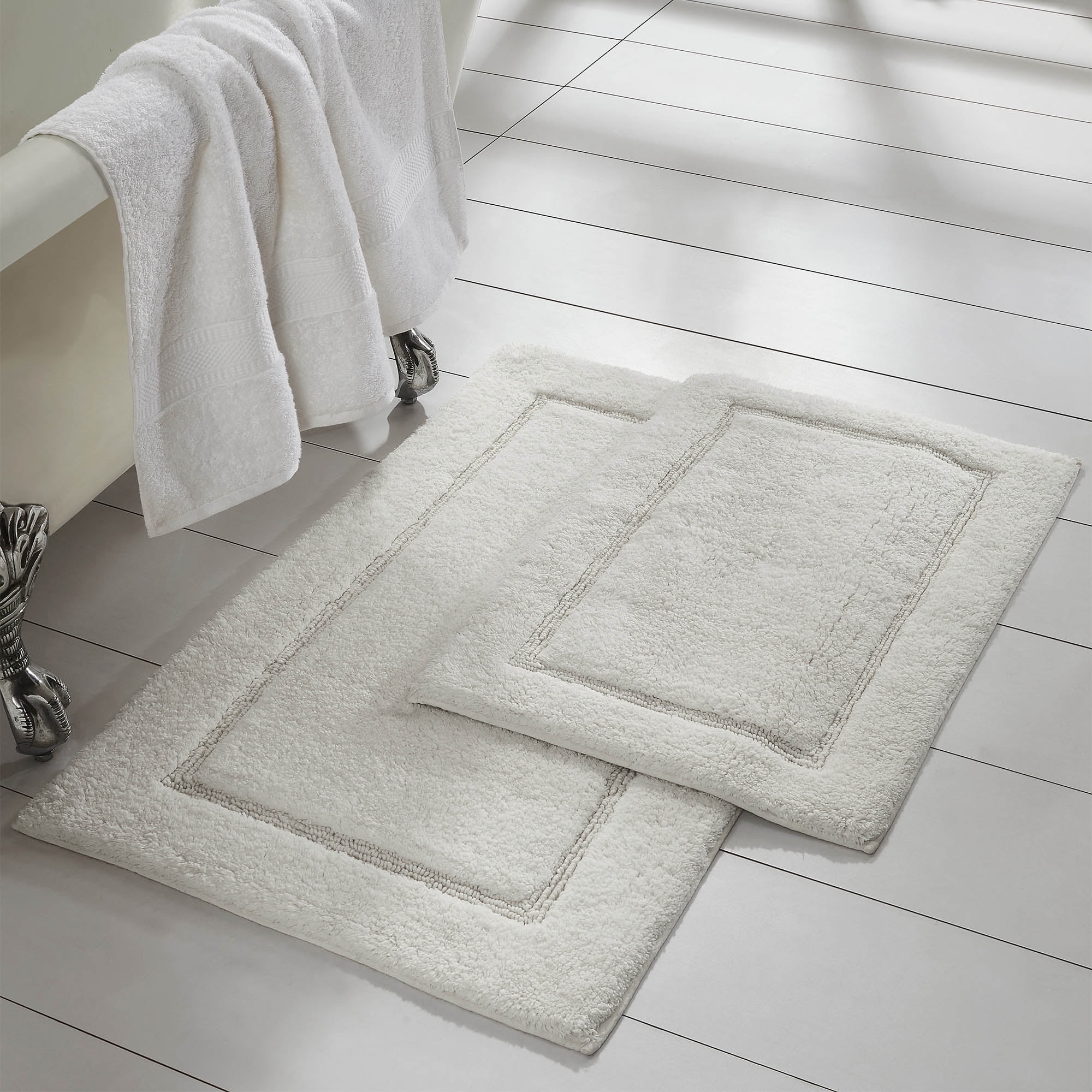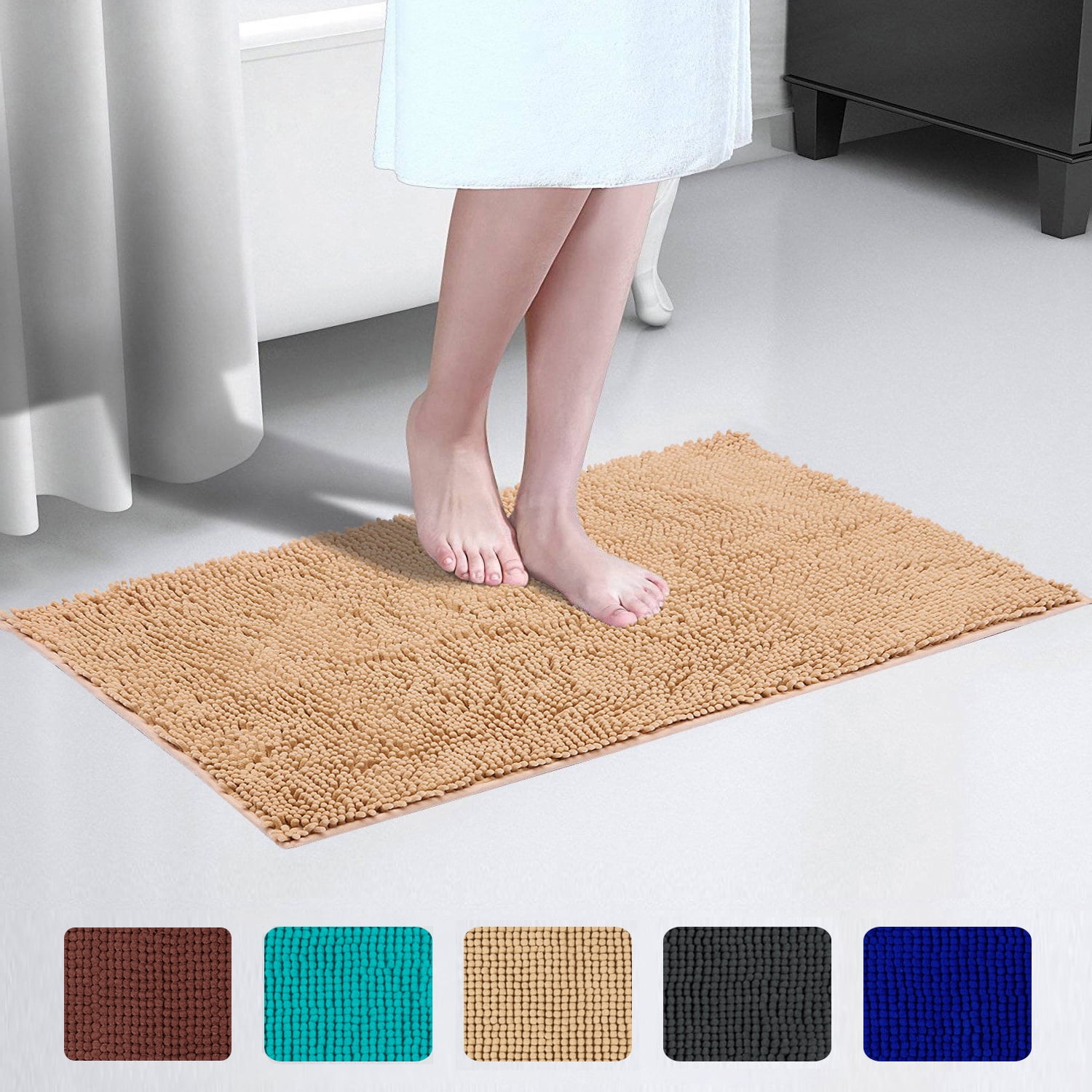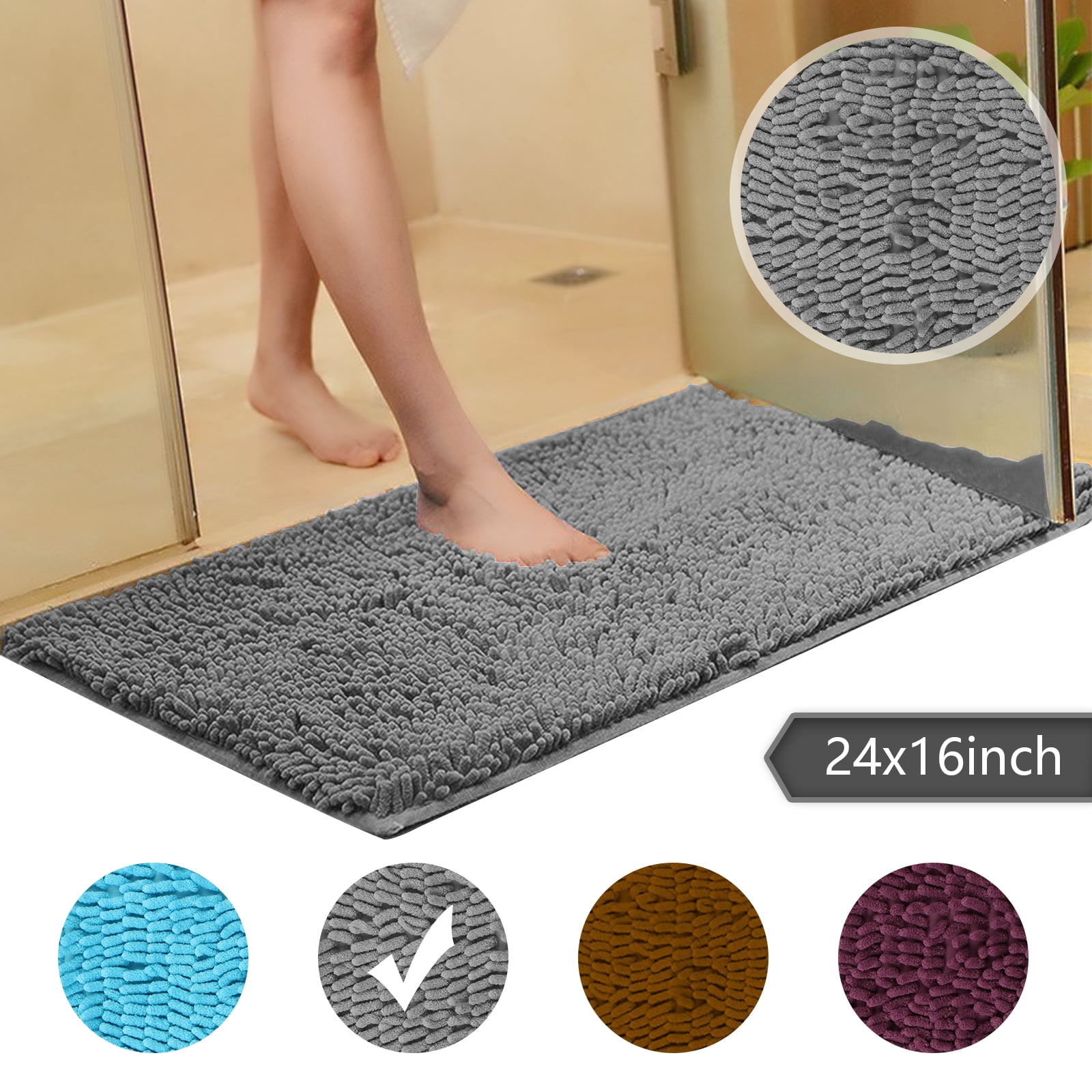Understanding Non-Slip Bathroom Rugs

Bathroom safety and hygiene are paramount, and non-slip bathroom rugs play a crucial role in achieving both. These rugs provide a secure footing, preventing slips and falls, especially on wet surfaces. They also absorb moisture, reducing the risk of bacteria and mold growth, contributing to a cleaner and healthier bathroom environment.
Materials Used in Non-Slip Bathroom Rugs
The material used in a non-slip bathroom rug significantly influences its durability, absorbency, and aesthetic appeal. Understanding the pros and cons of different materials can help you make an informed choice.
- Microfiber: Known for its softness and absorbency, microfiber is an excellent choice for bathroom rugs. It dries quickly, making it ideal for high-traffic areas. However, it can be susceptible to pilling over time.
- Cotton: A natural and breathable material, cotton is comfortable and absorbent. However, it tends to be more prone to mildew and requires frequent washing.
- Polyester: Polyester is a durable and stain-resistant option, making it suitable for high-traffic bathrooms. It is also relatively easy to care for. However, it may not be as absorbent as other materials.
- Rubber: Rubber is often used as a backing for non-slip bathroom rugs, providing excellent traction and preventing the rug from slipping. However, it can be less comfortable than other materials.
- Bamboo: A sustainable and eco-friendly option, bamboo is naturally antimicrobial and moisture-wicking. However, it can be more expensive than other materials.
Key Features to Consider
Choosing the right non-slip bathroom rug involves considering several key features that impact its functionality and aesthetic appeal.
- Size: The size of the rug should be appropriate for the space it will occupy. A rug that is too small may not provide adequate coverage, while one that is too large can be a tripping hazard.
- Shape: Bathroom rugs are available in various shapes, including rectangular, oval, and round. Choose a shape that complements the layout of your bathroom.
- Design: The design of the rug should complement the overall aesthetic of your bathroom. Choose a pattern or color that you find pleasing and that enhances the ambiance of the space.
- Non-Slip Backing: A non-slip backing is essential for preventing the rug from slipping on wet surfaces. Look for rugs with a rubber or latex backing.
- Washability: Choose a rug that is machine washable or can be easily cleaned by hand.
Types of Non-Slip Bathroom Rugs

Non-slip bathroom rugs are essential for creating a safe and comfortable bathroom environment. They provide a secure footing, preventing slips and falls, especially on wet surfaces. The choice of rug depends on factors like absorbency, durability, and cleaning ease. Here’s a breakdown of different types of non-slip bathroom rugs, their advantages, disadvantages, and ideal use cases.
Types of Non-Slip Bathroom Rugs
The following table summarizes the various types of non-slip bathroom rugs, highlighting their key features and suitability:
| Material | Pros | Cons | Ideal Use Cases | Microfiber | Highly absorbent, soft, quick-drying, machine-washable | Can be prone to shedding, may not be as durable as other materials | Ideal for high-traffic areas, absorbing water quickly after showers or baths | Memory Foam | Provides cushioning and comfort, soft underfoot | May not be as absorbent as other materials, can be more expensive | Suitable for bathrooms where comfort is a priority, providing a plush feel | Rubber-backed | Durable, slip-resistant, easy to clean | May not be as absorbent as microfiber or memory foam, can be less comfortable | Ideal for high-moisture areas, offering a secure grip on wet surfaces |
|---|
Tips for Using and Maintaining Non-Slip Bathroom Rugs: Non Slip Bathroom Rugs

Non-slip bathroom rugs are a practical addition to any bathroom, offering safety and comfort. Proper installation, cleaning, and maintenance practices are essential for maximizing their longevity and effectiveness.
Installing and Positioning Non-Slip Bathroom Rugs
The placement of non-slip bathroom rugs plays a crucial role in their effectiveness and aesthetics. Here are some guidelines for optimal installation:
- Choose the Right Size: Ensure the rug is large enough to cover the area where you need traction, typically near the bathtub or shower. Avoid rugs that are too small, as they may bunch up or become a tripping hazard.
- Position Strategically: Place the rug in a location that provides maximum safety and convenience. It should be readily accessible to step on when exiting the shower or bathtub.
- Secure the Rug: Non-slip rugs often feature a textured backing to prevent slipping. However, additional measures can be taken to ensure stability. Consider using a non-slip rug pad or spray underneath the rug to further enhance its grip on the floor.
- Avoid Overlapping: Avoid placing rugs on top of each other, as this can create a tripping hazard.
Cleaning and Stain Removal Techniques, Non slip bathroom rugs
Maintaining a clean and hygienic bathroom is essential for preventing the spread of germs. Here are some cleaning methods for different non-slip bathroom rug materials:
- Machine Washable Rugs: Many non-slip rugs are machine washable, making them convenient to clean. Follow the manufacturer’s instructions regarding washing temperature and drying methods.
- Hand-Washable Rugs: Some rugs are best hand-washed to prevent damage. Use a mild detergent and lukewarm water, gently rubbing the rug to remove dirt and stains. Rinse thoroughly and allow the rug to air dry completely.
- Stain Removal: For stubborn stains, consult the manufacturer’s cleaning instructions or try a mild stain remover specifically designed for rugs. Avoid harsh chemicals or abrasive cleaners that could damage the rug’s fibers.
Extending the Lifespan of Non-Slip Bathroom Rugs
Proper maintenance is crucial for extending the lifespan of non-slip bathroom rugs. Here are some tips:
- Regular Cleaning: Regularly vacuum or shake out the rug to remove loose dirt and debris. This helps prevent dirt from becoming embedded in the fibers, which can lead to premature wear and tear.
- Proper Drying: After washing, allow the rug to air dry completely. Avoid using a dryer, as high heat can damage the rug’s fibers and reduce its effectiveness.
- Storage: When not in use, store the rug in a cool, dry place. Avoid storing it in direct sunlight or in a humid environment, as this can lead to fading or mildew growth.
- Inspect Regularly: Regularly inspect the rug for signs of wear and tear, such as fraying, holes, or loose threads. Replace the rug promptly if any damage is observed to prevent safety hazards.
